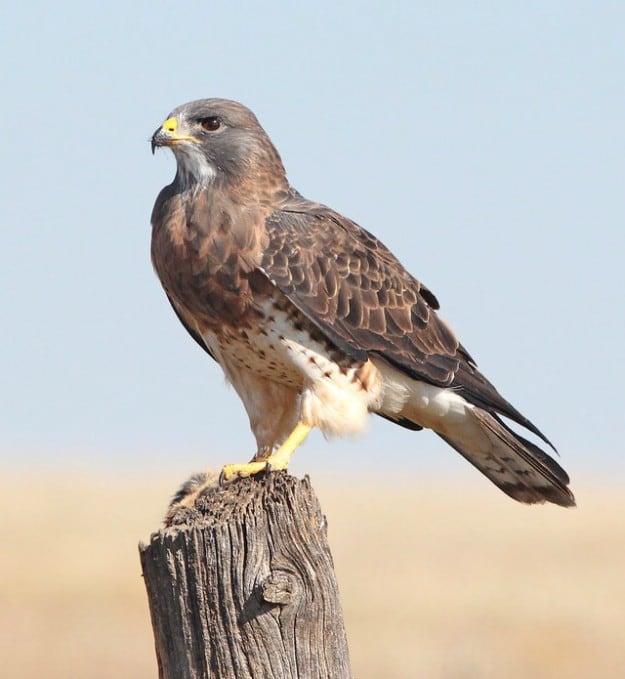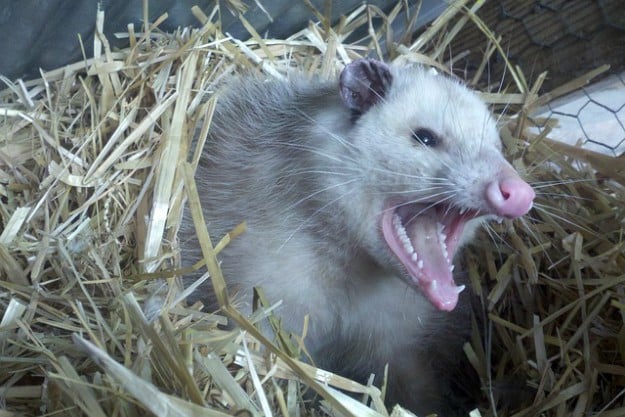No work day around the homestead or prepper retreat is ever complete without checking for signs to see if farm predators have been nearby. Most farm predators attack between dusk and dawn, which makes a late afternoon check of all pens and enclosures mandatory for any farming household. Without this check, you may lose your animals or crop to eager and hungry wild animals both large and small.
Top Farm Predators: Protecting Your Livestock
Livestock protection is a never-ending job on any homestead. The one day you decide you’re too tired to do a pen or fence perimeter check – after all, the critters have been present and accounted for every morning for months – is exactly when you will wake up and find feathers and bloody remains.
Hawks

These deadly and persistent predators can wipe out a flock in mere days. Unfortunately, in most states, hawks are not classified as nuisance animals or predators – making it illegal to kill them. However, just because it's against the law to kill hawks doesn't mean you can’t use your rifle to teach them farm avoidance.
My chicks and ducks free-ranged for days on end without a single problem. At night, I would simply before I put them up in the Fort Knox of chicken coops and runs. Then one day, I walked outside with treats. I was calling for them to follow me to their pen when I discovered I was short FOUR birds! I did “beak and bill” count three times. Then I counted again by chicken and duck breed. Sure enough, two chickens and two ducks were simply gone without a trace – a hawk had definitely been here.
I really, really wanted to shoot one of the so-called “majestic” birds, but a huge fine was just not in my budget. So, a lesson in farm avoidance it was. I grabbed my .22 Henry and let the flock free (it took a lot of coaxing to get them to come back out the day after the carnage took place). Then I sat quietly for several hours while they free-ranged – so not an easy thing for most women to do!
When a hawk, crow, or buzzard flew overhead, I fired off a round from my Henry. Surprisingly, my flock was unfazed. Apparently they've grown used to the sound of gunfire around the homestead! I never aimed my rifle at the birds, just in their vicinity, well below where they were flying, shooting into the hillside. For the next three days, I repeated this same action. I then kept up the habit three times a week for a month. Because of these efforts, I haven't spotted a hawk in a long time now. Still, I'll continue with my routine so the aerial farm predators never think it's safe to come back to my farm for lunch. Now I bet they teach their young to fly in a completely different direction as well.
Mink
These nasty little rodents can get inside a hole the size of a half-dollar. Yep, that means the easily flexible chicken wire is not going to ever do any good preventing their entry. Hardware cloth, the wire commonly used on rabbit cages, is what chicken runs should be made from. Use it on the floors and around the base of a coop to protect your flock.
Also handy to know is that minks tend to never stray too far from a water source, such as a creek, stream, or low area of the property where water puddles. Dog and cats are also good deterrents to mink. Guineas are actually even better at warding off the little killers. But minks are swift and stealthy creatures who can — and will — sneak past your furry guard critters.
There are a few extra measures you can take to stop them. We placed homemade snares around the chicken coop and duck hut and leave them there ALWAYS. I also set up a small trap nearby after spotting mink prints near the poultry pens. I covered the coop half way up with old metal sheeting and hardware cloth. However, I still occasionally find mink chew marks at the corners of the coop where the mink must work diligently to nibble in between the hardware cloth square and the very small spaces between where the sides of the metal sheeting end just before each corner panel.
Learning how to identify both the tracks and droppings of the farm predators who roam near your homestead is one of the most essential parts of learning how to ward them away from your livestock.
Mink have been known to burrow inside bedding and nesting boxes in chicken coops. Here, they nap while waiting until their free-ranging dinner walks back home for the night. Always take a rake and/or your dog, and check the entire coop carefully if it's left open while the flock is free-ranging – or even it is kept closed just to be on the safe side. The sneaky habits of mink are exactly why I would never use a dusk-to-dawn automatic door on my chicken coop and duck hut.
When doing so is budget friendly, purchase an owl decoy, preferably a motion-detector activated one. Solar motion-detector lights to place around your chicken coop also make a huge difference. The lights are also excellent at deterring other types of predators which venture near larger livestock in your pasture our barn.
Owls
While they're truly beautiful birds, they'll kill your flock as well. It is illegal to kill any bird of prey, so don’t shoot owls either. Owls are patient creatures. They'll sit for hours watching prey and waiting until it is truly safe for them to approach before attacking. Motion-detector lights, especially the type that emit sound, will deter owls. Keeping a cat around, as long as it has been trained not to attack your flock, will also help keep owls from looking at your coop.
Coyotes
This predator you can kill – at least in most states — when it poses a danger to your livestock. Guineas cannot kill a coyote like they can mink or snakes, but they will quickly and oh so loudly alert you that danger has encroached upon your property. Donkeys, particularly mini donkeys, are the best coyote defense mechanism I have ever come across.
Mini donkeys treat the sharp-toothed predators as if they are a soccer ball. They'll go out of their way to chase and kick any coyote that enters their domain. Keeping mini donkeys out in the pasture with cows, in the barn with the horses, and moved into a fenced area around the chicken coop at night, should deter coyotes from coming onto your homestead or prepper retreat for a quick meal.
Foxes
These sly little creatures are extremely agile and quiet farm predators. They're also easily startled. Motion detector lights, donkeys who are on guard against coyotes, guineas, and a good ole farm dog will help prevent a fox from slipping too close to your livestock.
Weasels
The weasel family, which includes minks but is also comprised of badgers, ferrets, and skunks, tend to kill multiple animals at one time. They do this even if they don’t eat more than one of the small animals killed. They commonly attack with small bites to the neck or head. But sometimes they'll just bite off the head and neck and take it with them to snack on once safely back to their hiding hole. Weasels often leave a pole of dead chickens or ducks stacked up in fairly neat piles before they run off with a full belly. Carefully hidden snare traps and cage traps set up near vulnerable livestock are the best ways to get rid of weasels.
Opossums

These small farm predators are kind of lazy. They'll always take the path of least resistance to secure a meal. That means that building a secure chicken coop and run will protect your flock. Possums often prey on weak young or injured large livestock. They have been known to bite horses and cows on the leg. This is so they can spread the potentially deadly EPM disease.
Motion detector lights on the exterior of barn can help deter possums from crawling into the stall. Typically, horses and large livestock are only hampered by possums if they get into their feed and spread disease. A trash can or plastic tub with a lid, or a barrel with a piece of wood and brick on top of it, will not stop a hungry possum from getting inside. Keeping feed secure is just as important to livestock health and safety as building the perfect chicken coop is to prevent your egg-layers from getting slaughtered. Possums commonly begin eating the abdomen of its prey first. If you find a dead animal in such a state, you most likely have a possum on the property who got startled away before it could finish.
Raccoons
These crafty critters use their sharp claws to tear chicken wire, rip into feed bags, and to climb a lot higher than you would expect to get a bite to eat. They're smart as well. Any lock you place on a feed container or pen should be a two-step lock. A raccoon merely mocks attempts to thwart its hunger pains with a simple one-step lock. Put out snare traps or cage traps when you spot signs of either opossum or raccoon activity.
I attach some hardware cloth around any cage I am trying to bait a raccoon into. This is because they will often simply reach inside the cage bars. Then, they'll pull the enticing food left inside to towards them. Actually, possums try to pull this same trick, with a lesser degree of success. To increase the chances of luring a raccoon inside my trap, I spray painted part of it red and put the bait on a red or pink tray. For some reason, raccoons, at least in Appalachia, prefer red, pink, and orange. They consistently seem to be drawn to the colors.
Here is a video posted by All About Animal on the top 10 best guard dog breeds for livestock and poultry:
Are there any more farm predators you know of? Please share them in the comments section below!
You can also start raising guineas to protect the rest of your poultry!

Cool info!